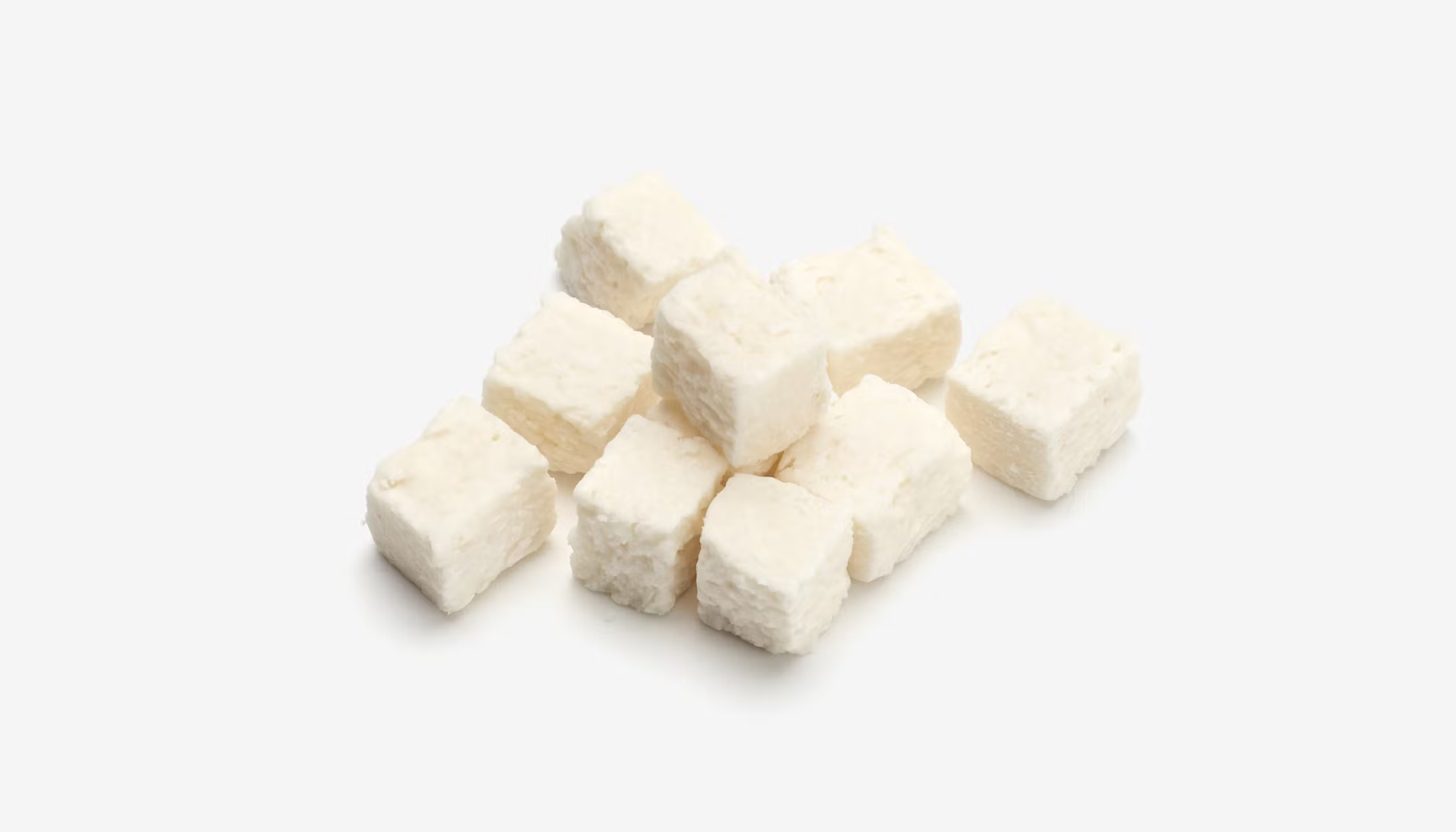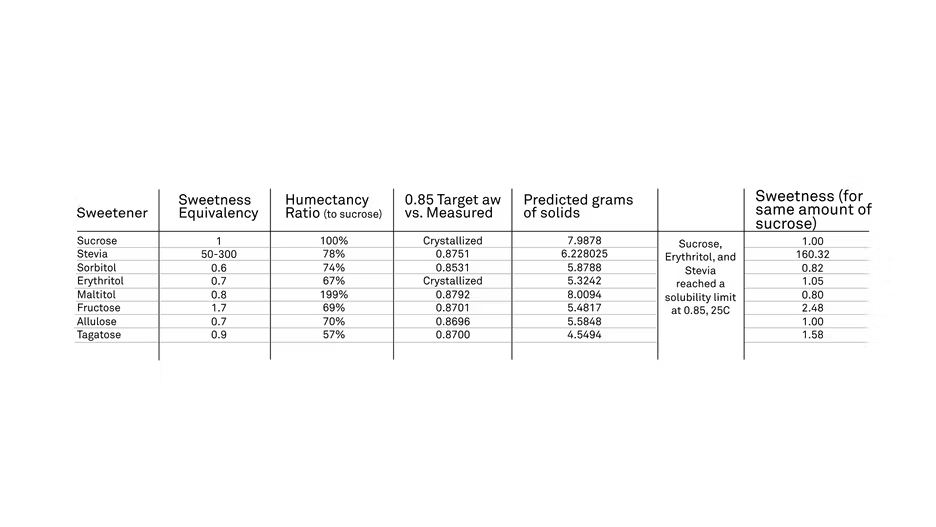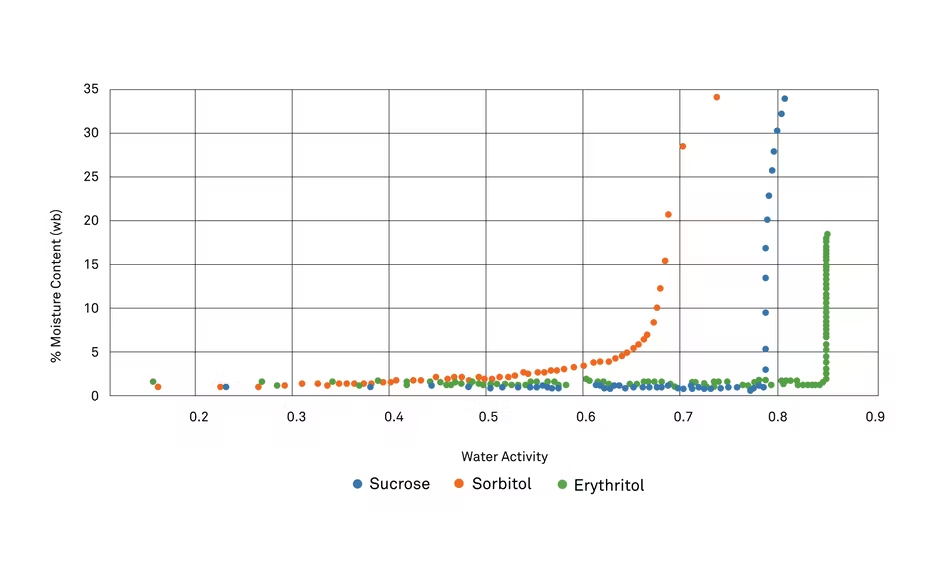Market insights
Sugar alternatives, moisture content and water activity

Consumers are clamoring for low- or no-sugar alternatives to their favorite snacks. Here’s how food companies can deliver great products without adverse effects.
In generations past, sugar was king. Food producers put it in breakfast cereals, candies, and even bread, and consumers ate it up.
But over the years, it has become evident that excessive sugar has many adverse effects on our health. Some of these downsides include obesity, heart disease, and diabetes. That has led consumers—many of whom have developed a taste for sweetness—to work toward cutting back on the amount of sugar they eat.
This shift has created a significant demand for sugar alternatives. Pressure from consumers and governmental agencies to reduce the amount of sugar in foods has turned the sugar alternative industry into an $18 billion market.
It’s also created a significant challenge for food producers and manufacturers. As food scientist Melanie Goulson says, “Replacing the functionality of sucrose is difficult enough, but food formulators must also consider regulatory issues, taste profiles, nutritional targets, digestive tolerance, shelf life issues, and product claims.”
Because even though alternative sweeteners are making it possible to create sugar-free versions of old consumer favorites, there’s more to sugar and its substitutes than just taste. Removing sugar affects a food’s sweetness, color, leavening, tenderness, moisture, texture, freezing point, and more.

Each available alternative has its pros and cons as a sugar substitute. The type of product you are creating will inform which sugar alternative is best for you. The following information can help you determine which varieties might be worth a try.
Alternative #1: Stevia
Pros:
- Readily available
- Established brand recognition
- pH and heat stable
Cons:
- Varied sweetness, depending on other factors
- Doesn’t brown (not ideal for baked goods)
- Bitter aftertaste
- Negative impact on intestinal health
Alternative #2: Sorbitol
Pros:
- Good humectant, meaning it binds well with water
- About 60 percent as sweet as sugar
- Good plasticizer in baking, which slows the staling process
Cons:
- Nutritive sweetener, meaning it has some calories
- Negative impact on intestinal health. Sorbitol has been used as an ingredient in laxatives.

Alternative #3: Erythritol
Pros:
- 60 to 70 percent as sweet as sugar
- Minimal effect on blood sugar level
- Established brand recognition
- Non-caloric, meaning it has very few calories
Cons:
- Low water solubility
- It has a cooling effect, which could be a pro or con depending on the product.

Alternative #4: Maltitol
Pros:
- Widely used
- Readily available to formulators
- 75 to 90 percent as sweet as sugar
- Is the most similar to sugar compared to other sugar alternatives
- Dissolves similarly to sugar
- High melting point
- Creamy texture
- No aftertaste
Cons:
- Nutritive sweetener, meaning it has some calories
- Increases blood sugar levels
Alternative #5: Fructose
Pros:
- Simple sugar that occurs naturally in fruit.
- Good humectant, meaning it binds well with water
- Lowers the freezing point
- Browning effect in baked goods
- Ferments well
Cons:
- “High fructose corn syrup” has a poor public perception
- Nutritive sweetener, with four calories per gram
- Eating too much fructose can have adverse effects on the body
Alternative #6: Allulose
Pros:
- Great for use in gummy foods
- Popular in keto-friendly foods
- Good humectant, meaning it binds well with water
- Lowers the freezing point
- Browning effect in baked goods
- 70 percent as sweet as sucrose
Cons:.
- Slightly bitter taste
Alternative #7: Tagatose
Pros:
- Good humectant, meaning it binds well with water
- Lowers the freezing point
- Browning effect in baked goods
- 70 percent as sweet as sucrose
- 90 percent as sweet as allulose
- No bitter taste
Cons:
- The FDA has declared tagatose an added sugar
- Some calories
- Historically expensive to produce, though that is changing
Honorable mention #1: Monk fruit extract
Pros:
- Very sweet, so a little bit goes a long way.
Cons:
- Small amounts do not replace sugar’s bulk.
Honorable mention #2: Maltitol
Pros:
- About 50 percent as sweet as sucrose
- Resists crystallization
- Popular in candies
Cons:
- About 50 percent as many calories as sucrose
Overcoming barriers by mixing alternative sweeteners
Clearly, there are no sugar alternatives that can completely replace sugar on their own. Some have a similar taste but different mass; others may hold an equivalent amount of water but change the product’s texture. So what’s a food scientist to do?
Fortunately, many creative minds have faced these problems and found effective workarounds. Here are a few barriers one might encounter, as well as some of their possible solutions.
Obstacle: I’m using a high-intensity sweetener, which doesn’t replace the bulk I lost when I removed the sugar. How can I replace that bulk without making my product far too sweet?
Clearly, there are no sugar alternatives that can completely replace sugar on their own. Some have a similar taste but different mass; others may hold an equivalent amount of water but change the product’s texture. So what’s a food scientist to do?
Fortunately, many creative minds have faced these problems and found effective workarounds. Here are a few barriers one might encounter, as well as some of their possible solutions.
Obstacle: I’m using a high-intensity sweetener, which doesn’t replace the bulk I lost when I removed the sugar. How can I replace that bulk without making my product far too sweet?
Solution: To make up for lost mass, you can add a bulking agent. Some possibilities are maltodextrin, polydextrose, or inulin fibers.
Obstacle: I’ve removed sugar from my ice cream product, so I need a replacement that is both water-binding and won’t drop my freezing point too much.
Solution: Consider using erythritol, which will help with your ice cream’s freezing point. You might also add Stevia to sweeten the product, then add a bulking agent to improve the feel of the ice cream in the mouth.
Obstacle: I want to create a sugar-free version of my successful nutrition bar. How can I do this without making my sugar-free version completely different in taste and texture?
Solution: Try using allulose to give the product sweetness, then add soluble corn fiber to help with the product’s bulk and texture. The soluble corn fiber will also help maintain your product’s taste and shelf life.
Obstacle: I’m using a sugar alternative in my product, but the sweetness is just not the same. Is a good substitute possible?
Solution: Try blending your existing sugar alternative with others that have more sweetness. While Stevia is popular, it has a delayed sweetness and a slightly bitter aftertaste. Blending Stevia with allulose or tagatose will give your product the initial burst of sweetness the consumer wants.
Obstacle: I’ve tried using Stevia, and I’ve tried using monk fruits. Both of them have an “off” taste to them. Is there a good-tasting sugar alternative?
Solution: Interestingly, some food producers have combined Stevia and monk fruit. The combination seems to neutralize their flavors and provide a neutral sweet taste. They seem to have a synergistic effect when they are blended.
Obstacle: Erythritol is a good fit for my product, with one exception: its cooling effect in the mouth. Can we keep the erythritol but counteract this effect?
Solution: Try blending in a little bit of Stevia. Stevia has the effect of settling down the bright, cooling effect erythritol can have on food.
Obstacle: I’m using an alternative sweetener in my cookie. The taste is good, but I’m just not getting the spread I got when I used sugar. What can I do?
Solution: Try increasing your fat-to-flour ratio, then reducing your baking time. This will give more of a spread to the cookie without adding sugar.
The future of alternative sweeteners
The popularity of alternative sweeteners is likely to remain strong. As a result, food producers who can work with alternative sweeteners to create sugar-free versions of old favorites are in a great position to reap the benefits of doing so.
While some food producers have already successfully created low-calorie or calorie-free alternatives to classic foods, there is still plenty of room for innovation. Understanding the pros and cons of the available sugar alternatives is a great place to start.
Newsletter signup
Case studies, webinars, and articles you'll love.
Receive the latest content on a regular basis!
